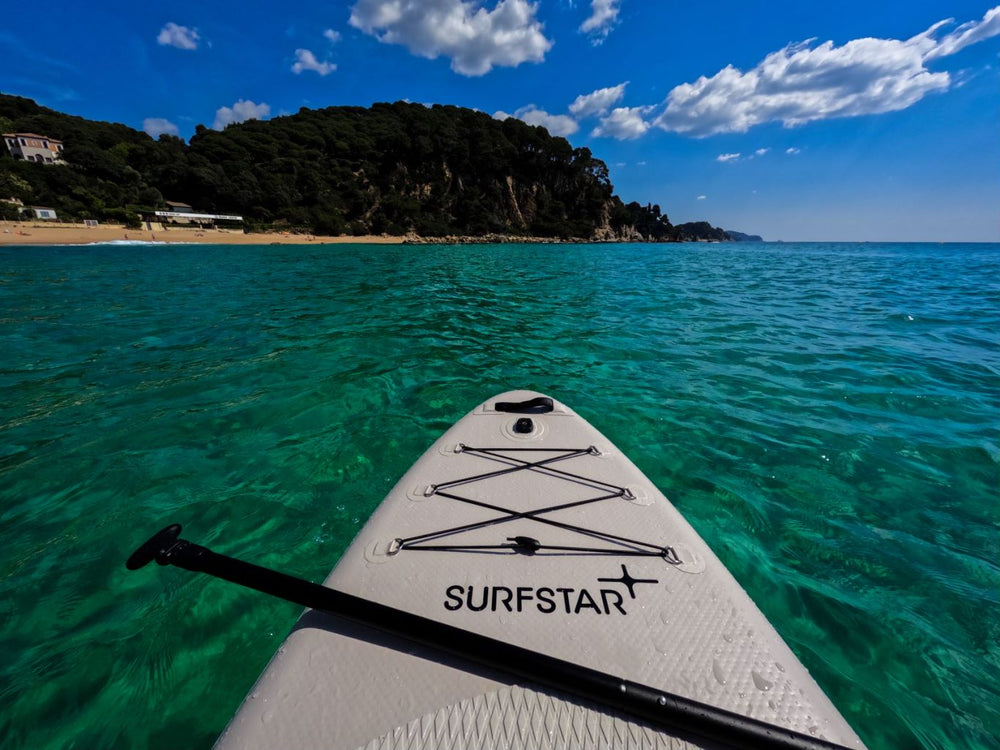All The Ways You Need To Know To Get Back Onto Your Paddle Board After Falling
Ever lost your balance on a paddleboard and struggled to get back on? We’ve all been there. Losing your balance is common, especially when you are first mastering the art of stand up paddleboarding. And while you may fall in less as you become more experienced, you’ll never stop paddle board falls completely. Even the most seasoned paddlers fall off from time to time. It’s normal to be met with conditions that make it more difficult to keep your balance. What matters is that you know how to approach this situation calmly and safely when it does happen.
Before we discuss the ways to get back up, it’s important to note how you should fall. When you begin to feel wobbly, make sure that you fall away from the board and flat against the water(make sure there is no hard rocks or reefs as well). This helps minimize the risk of injuring yourself as you fall.
Of course, also make sure to hang onto your paddle as you fall. However, if you lose it during the fall, get to the board first before trying to retrieve the paddle. It’s also recommended that you should always paddleboard with a leash attached to your ankle. This is why. If you fall, your paddleboard will quickly come back to you rather than float away.
Now, here are the ways you can get back on board after you’ve taken a spill:
a. The first method is the most common, and it is what you’ll be taught from any instructor or seasoned paddler. While treading water alongside the board, position yourself near the center. Then, grab the carry handle with one hand and pull yourself up until you can reach the opposite rail with the other hand. Once you’ve got a good grip, kick your legs against the surface of the water as you pull yourself up onto the board.
b. If you are a beginner, it might be easier to start further back on your board. You’ll use the same technique as above, but the weight distribution from you getting on the tail end of the board will sink the board and help you slide on.
c. There is also another way to get back on the board, which is called the stirrup technique. Attach some sort of rope or strap to the D-ring or handle of the board. Dangle the rope over the tail end of the board and create a loop so you have something to place your foot through. Then, stand on the loop and climb onto the board. This technique creates a kind of step for you to mount back onto the board.
d. Very similarly, another way to use a rope to get back on your board is to attach it to the handle at the front end of the board and pull it to the tail end, where you’re attempting to mount. Grab the rope and pull yourself, kicking your legs using the same technique as the first one.
e. You can even combine methods 4 and 5, if you have enough rope. This is a helpful solution for people who may not have as much upper body strength. Pull on the rope attached to the front of the board as you step onto the loop you’ve created on the tail end to lift yourself onto the board.
f. If you are with other paddlers, you can ask them to help you execute the flip rescue, which is a method used to pull someone else out of the water. If they don’t know the maneuver, you can teach them. Have them approach the board from the side opposite to you and then turn your board upside down. Grab onto the side now nearest to you, and the other paddler will use their body weight to flip the board back upright, leveraging you onto your board. This can also be used to save someone who is drowning or have lost conscious in the water.
As you can see, there are many ways to get back onto your board once you’ve fallen off. It is important to make sure that you know all of these techniques before going out on your board, as you never know the conditions you might end up facing. Understanding each of these methods is helpful in case rougher waters, an injury, or any other unexpected obstacles make it harder for you to perform the technique you would usually use.
Before you ever go out into deeper water, practice each of these methods in shallow water to make sure that you’ve mastered them. If you cannot successfully get back on your board on your own, you should never go out solo. It can be incredibly dangerous for you to be alone if you don’t know how to get back up onto your board properly.
These methods will also work for hard boards, though inflatable paddle boards are much more stable and therefore overall will be easier to get back onto because of its thickness and volume. Another helpful piece of information is to always try to mount your paddleboard on the upwind or wave side. Otherwise, the board will likely flip or go over your head when you put your weight on the downwind side. For obvious reasons, this can also be dangerous as it can lead to injury.
Overall, one of the first steps to becoming a pro at stand up paddleboarding is to make sure that you know how to rescue yourself and others. As I said above, it is inevitable that you will fall off your board at some point — especially when you are just starting out. Even those who have been paddling for years will sometimes be in conditions that cause them to lose balance. The number one priority should always be safety to help ensure that you can keep adventuring!





Leave a comment